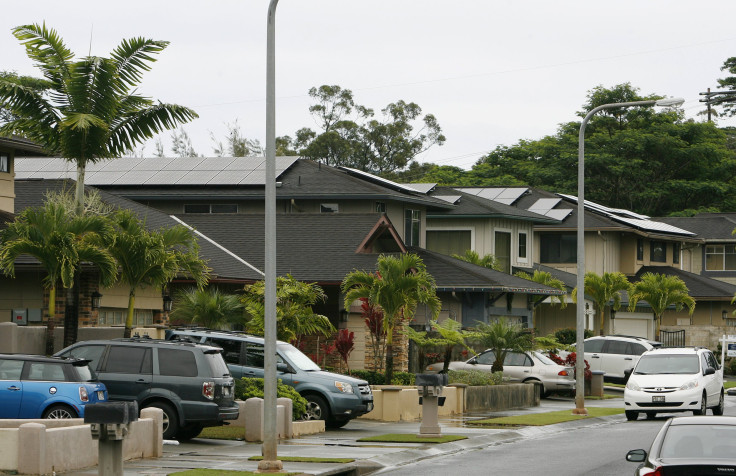Solar Power Growing Pains: How Will Hawaii And Germany Cope With The Boom In Alternative Energy?

Is clean energy a victim of its own success, or is the transition from fossil fuels to alternative energy just going through some natural growing pains? However you spin it, in places like Hawaii and Germany, rooftop solar panels are popping up like weeds – but at a rate that might be too fast for utility companies to handle.
Solar panel setups can often supply enough juice to power a home, and more – with any excess electricity fed back into the grid. But this makes managing the flow of power a bit more difficult for the utility, compounded by the fact that solar power generation can fluctuate with changes in cloud cover. The result can be either a sudden draw on the grid on cloudy days, or a potentially overloading power surge on unexpectedly sunny days. Not every grid is able to cope.
In Hawaii, solar power-generating capacity has doubled just about every year since 2005, according to the Honolulu Star-Advertiser. But the utility company and the grid are struggling to keep up with this expansion. This September, the Hawaiian Electric Co. (HECO) told customers that they could no longer guarantee that certain residential solar photovoltaic (PV) systems could be interconnected with the utility grid. HECO says it’s worried that the solar power boom might lead to instability if the power generated by homeowners’ panels exceeds the output from local power plants.
"We can't allow circuits to become dangerous," Peter Rosegg, a HECO spokesman, told ClimateWire. "We can't allow circuits to become unreliable because there's too much PV on those circuits."
Many Hawaiians are frustrated. Take William Walker, who spent $35,000 for a rooftop solar PV system for his Oahu home, only to be left off the grid thanks to the new HECO policy. Now he has to keep paying his monthly $250 electric bill to HECO along with the $300 monthly payments on his solar panels. Walker told ClimateWire that he's not completely buying HECO’s explanation for the policy change.
“My belief is it's purely profit-motivated, to keep people away from PV and keep them on the grid,” Walker said.
And Walker's situation is hardly unique. Even though HECO will be grandfathering in more than 200 customers who submitted what are called "net energy metering" agreements -- which certify that a solar power system has been installed and approved by a licensed electrical contractor -- before a September deadline, hundreds more are still left in limbo, according to Honolulu Civil Beat. It's unclear when their systems will be able to be connected up.
Other U.S. states are eyeing how Hawaii balances solar and conventional power to avoid overloading the grid.
"As an engineer, you always want to look at the worst-case scenario. Well, [Hawaii has] it," Elaine Sison-Lebrilla, a project manager for Sacramento, Calif.'s publicly owned utility, told the Los Angeles Times in November.
Though its climate might be radically different, Germany is facing a problem similar to Hawaii's in the midst of its solar boom. Experts predict that solar-generated power may soon be able to power the whole country – but only during the sunniest hours, between noon and 2 p.m. That midday bulge is problematic for the grid.
“Any further [solar] installations beyond this point could push structural solar power supply above demand and cause permanent midday grid instability,” Citigroup researcher Jason Channell wrote in a report quoted by Business Insider.
The hope may lie in smart grids that use advanced communications networks to better juggle the production of electricity from multiple sources, as well as large-scale batteries that could store excess solar power. But neither option is especially cheap. A 2009 report from NPR estimated the cost of overhauling the grid across America at somewhere between $100 billion and $2 trillion.
Some solar advocates have faith that the market will adjust as PV systems become more popular. It is for that reason, research institute Fraunhofer ISE said in a report this past September [PDF], that Germany should not try to halt the solar power boom to wait for storage technology to catch up.
“Investing in storage is first profitable when large price differences for electricity frequently occur,” Fraunhofer ISE’s Harry Wirth wrote. “Continued, further expansion in PV and wind capacity will cause prices on the electricity exchange… to sink more often and more drastically.”
© Copyright IBTimes 2024. All rights reserved.




















